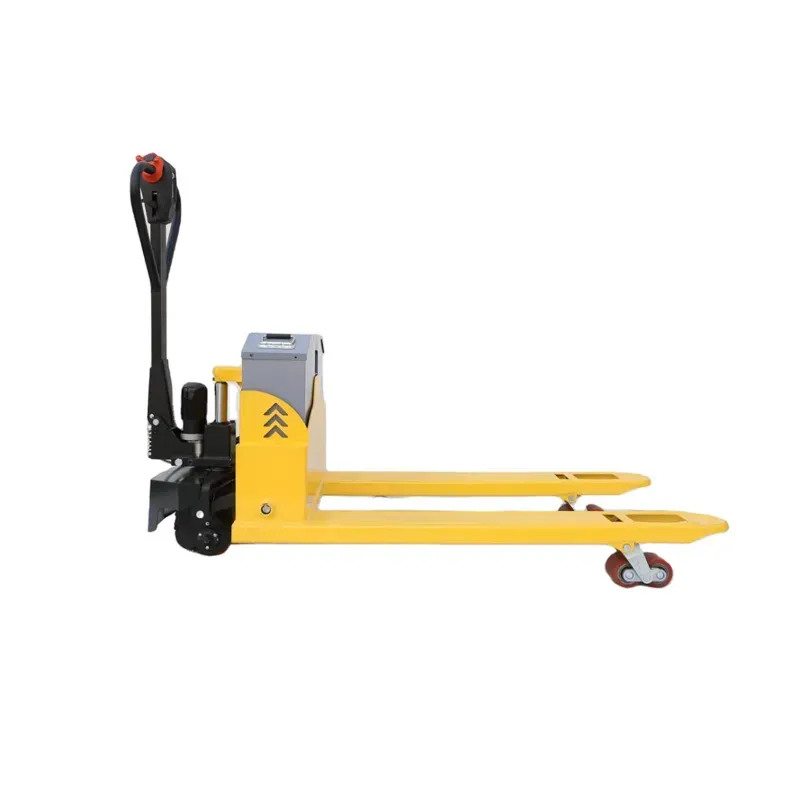


Understanding Pallet Carts A Comprehensive Overview
In the world of logistics and warehouse management, efficiency is key. One tool that has revolutionized the movement of goods within a facility is the pallet cart. Designed to streamline the transportation of heavy loads, pallet carts are a vital component in various industries, including retail, manufacturing, and distribution. In this article, we will explore the functions, types, benefits, and considerations when using pallet carts.
What is a Pallet Cart?
A pallet cart, often referred to as a pallet jack or pallet truck, is a manual or powered device used to lift and move palletized loads. Its design typically includes a pair of forks that slide beneath the pallet, allowing operators to lift it with a hydraulic system or electric motor. This equipment is crucial for handling goods that are loaded onto pallets, which facilitates easy transport within warehouses, factories, and retail environments.
Types of Pallet Carts
There are primarily two types of pallet carts manual and powered.
1. Manual Pallet Carts These are the most commonly used pallet trucks. They are operated by hand and rely on hydraulic mechanisms for lifting. Manual pallet carts are versatile, inexpensive, and require no special training to operate. They can carry loads up to several tons, making them suitable for various applications.
2. Powered Pallet Carts Also known as electric pallet jacks, these carts utilize electric motors to lift and move pallets. They often come with features like ergonomic handles, controls for speed regulation, and even systems for scanning barcodes. Powered pallet carts are ideal for larger facilities where frequent and heavy lifting is required, reducing physical strain on workers.
Benefits of Using Pallet Carts
The adoption of pallet carts offers several advantages to businesses
1. Increased Efficiency Pallet carts enable faster movement of goods, significantly boosting productivity. Employees can transport multiple pallets in less time compared to manual lifting.
2. Reduced Physical Strain Using a pallet cart minimizes the risk of injury associated with lifting heavy loads. This ergonomic benefit is crucial for maintaining a healthy workforce and reducing workplace accidents.

3. Space Optimization With the ability to maneuver pallets in tight spaces, pallet carts help maximize storage efficiency. They allow for better organization within warehouses, reducing the amount of time spent searching for items.
4. Cost-Effectiveness Compared to more advanced machinery like forklifts, pallet carts are relatively inexpensive. They require less maintenance and have lower operational costs, making them a budget-friendly option for businesses of all sizes.
5. Versatility Pallet carts can handle a variety of pallet sizes and weights, making them suitable for multiple applications across different industries.
Considerations When Choosing a Pallet Cart
While pallet carts offer numerous benefits, selecting the right one for your operation requires careful consideration
1. Load Capacity Assess the maximum weight you typically handle. Ensure that the pallet cart you choose can accommodate your heaviest loads.
2. Fork Length and Width Depending on the size of the pallets in your warehouse, fork dimensions may vary. It's important to choose a cart with forks that fit your pallets properly.
3. Manoeuvrability Consider the layout of your workspace. If you have narrow aisles or tight corners, selecting a more compact model may be beneficial.
4. Maintenance Needs Understand the maintenance requirements of both manual and powered pallet carts. Regular checks and servicing will ensure longevity and prevent operational disruptions.
5. Ergonomics For powered models, examine the ergonomics of the handle and control layout. A well-designed cart will enhance user comfort and reduce fatigue during extended use.
Conclusion
Pallet carts are indispensable tools in modern warehousing and logistics, enabling more efficient and safer handling of materials. Their variety of designs caters to different operational needs, allowing organizations to enhance productivity while minimizing workplace injuries. By considering factors such as load capacity, maneuverability, and ergonomics, businesses can select the right pallet cart to optimize their operations. In an era where efficiency and safety are paramount, investing in quality pallet carts can lead to significant improvements in workflow and employee satisfaction.



